Make Your Own Cleaning Products with Common Household Items
These safe, DIY recipes for cleaning the house are my tried-and-true recipes made of things I always have on hand.
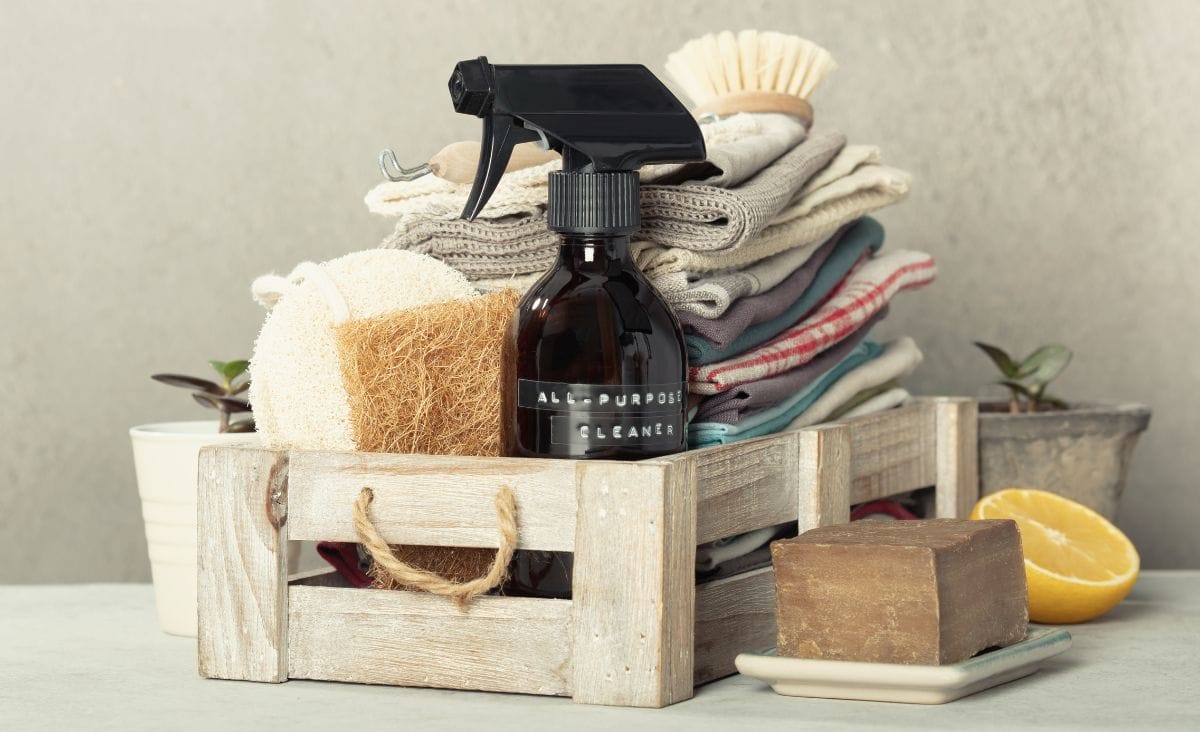
I love cleaning! You might say I am crazy for enjoying cleaning, but it is true. My three children, bless their hearts, refuse to remove their shoes when they enter the house, so I have plenty of chances to do it. The cleaning is not the only part I like, though. I like to look at things and see how they can be improved. Everything can be changed, enhanced, altered, or bettered.
Keeping to today’s topic, I’ll share with you how I did all those things with my cleaning regime.
I used to stick with heavy-duty cleaners because I thought it was the only thing that would really clean my home. In fact, anything with the words Ultra, Mega, or Super was a magnet for me. When someone—a bazillion years ago, well before my homesteading movement—said that vinegar was the best cleaner ever, I figured they were some health nuts that didn’t understand real clean.
One day, before a big family get-together, I realized I was out of Windex (yes, I clean windows for family). Not having time to go to the store, I googled “vinegar window cleaner.” It was a basic vinegar, rubbing alcohol, and water recipe, and the thing worked like gold! Throw in some crumpled newspaper to scrub with, and you’ll forget you’ve even got company on their way.
My kids could hear my exclamations of joy from every room in the house. “Come see this! That weird, foggy thing came off of the window! Seriously, come here and see this!” That changed my perspective on DIY cleaning products forever. There are no harmful chemicals for me and my crew anymore.
Making Your Own Cleaning Products
So, are you ready for my secret DIY cleaning products? You are fortunate to be among the few people I would trust enough to show these to. Just kidding, but I do pride myself on the recipes I use. There are a lot of them online, but I had to blind test them all to find the best ones. For years, these have been my go-to recipes, and they never fail.
A note about Dawn Dish Detergent: The jury is still out about how healthy and natural Dawn is. I use it in my recipes because it is certainly safer than commercial cleaning products, and it’s a frugal solution. If you are uncomfortable with Dawn, you can exchange it in equal amounts with Castile Soap.
Dusting Spray
This dusting spray recipe creates a natural cleaning solution, designed to keep surfaces dust-free and shining.
- 1 3/4 c. Water
- 1/4 c. White Vinegar
- 2 tsp. Olive Oil
Combine water, vinegar, and olive oil in a spray bottle. Before each use, shake the bottle well to mix the oil and water. If you prefer a less waxy finish, substitute olive oil with coconut oil, warming the water or the bottle beforehand to ensure the oil blends smoothly.
Dishwasher Detergent
This homemade dishwasher detergent recipe combines Borax, washing soda, kosher salt, and citric acid to effectively clean dishes.
- 1 c. Borax
- 1 c. Washing Soda **make your own washing soda**
- 1/2 c. Kosher Salt
- 1/2 c. Citric Acid
In a plastic tub or Tupperware, mix together the Borax, washing soda, kosher salt, and citric acid thoroughly. For regular loads, use 2 tablespoons of this mixture per load. For light cleaning or if you pre-rinse dishes, reduce the amount to 1 tablespoon.
All-Purpose Cleaner
This all-purpose cleaner recipe has an option to add orange peel strips for extra cleaning strength and a fresh scent.
- 1 3/4 c. Water
- 1/4 c. White Vinegar
- 1/4 tsp. Dawn Dish Detergent
- 1/4 tsp. Tea Tree Oil (about 10 drops)
Combine water, vinegar, dish detergent, and tea tree oil in a spray bottle. Optionally, add a few strips of orange peel for enhanced scent and cleaning power. Use this solution as you would any standard all-purpose cleaner.
Soft Scrub for Tough Messes
This soft scrub recipe tackles tough stains, perfect for rings around the tub and more.
- 1/3 c. Baking Soda
- 3 tbsp. Dawn Dish Detergent
- 3 tbsp. Club Soda
Mix baking soda, Dawn dish detergent, and club soda together, and transfer the mixture into a squirt bottle, such as an upcycled ketchup bottle. Shake the bottle well before each use. Apply the scrub to stubborn stains, let it sit for 30 minutes, then scrub and rinse off.
For heavy-duty jobs, like the oven and stove top, check out Naturally Clean Your Oven & Stove Top.
Glass Cleaner
When cleaning your windows, your results are based on two things: what you clean the windows with and how you clean the windows. This recipe will get you off on the right foot.
- 1/2 c. Distilled Water
- 1/4 c. Rubbing Alcohol (70% strength)
- 1/4 c. White Vinegar
- 1/4 tsp. Dawn Dish Detergent
Pour distilled water, rubbing alcohol, white vinegar, and Dawn dish detergent into a spray bottle. Before each use, gently swirl the bottle to mix the ingredients. For an eco-friendly cleaning method, use old newspapers instead of paper towels or rags to wipe surfaces clean, allowing you to compost the newspapers afterward.
Homemade Carpet Cleaners that are Chemical-Free
We are in the midst of potty training at home. There have been a few instances of running with a full potty, saying, “Mama, look!” followed by tripping. Needless to say, our area rug was developing a less-than-pleasant odor. Commercial carpet cleaning products are not an option for me. Do you know what is in those? My kids spend the majority of their day playing on this rug, and I guarantee that no amount of going over it with the machine will rinse and suck out all the residue. No, thank you!
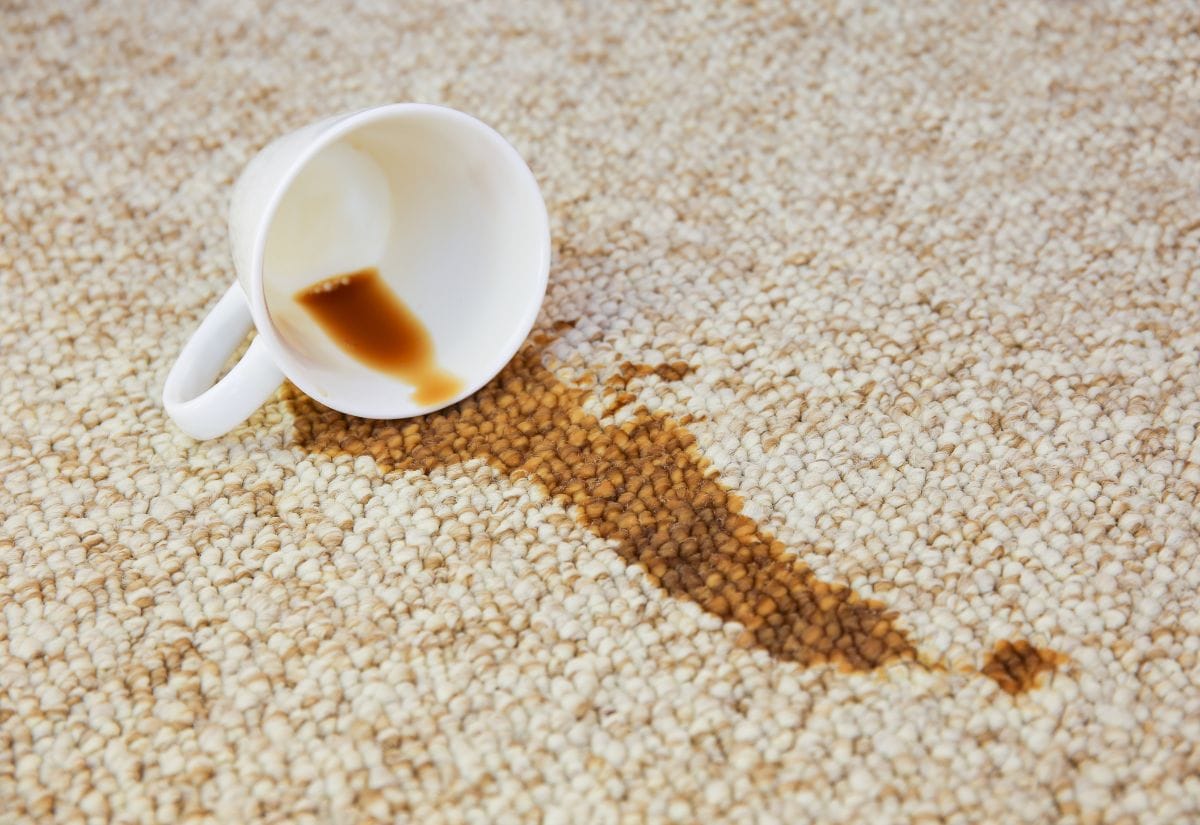
Not long ago, the Today Show did a piece that hit close to home for me. It was called The Dirty Truth About Cleaning Products. They examine the products’ lack of transparency, as well as the words danger, warning, and caution. It never ceases to amaze me that the European Union takes a more firm position than the United States when it comes to chemical usage and transparency. Have we not seen this before with GMOs and egg safety issues? I digress…
Naphthalene
One of the main problems with carpet cleaners is naphthalene. Is it okay if I say “yuck” on behalf of everyone? The raw materials for naphthalene are coal tar and crude oil. In the United States, it is used as a pesticide and is present in cigarette smoke and vehicle exhaust fumes. It has more than a dozen other uses in the cleaning industry, including mothballs, carpet cleaners, and more. If you can smell the mothballs, you’re inhaling naphthalene.
Splashing cleaner on your hands or, as happened today, stepping on wet carpet causes it to soak into your skin, where it damages your skin cells. Imagine a tar pit as a playground for your kids. Yup, that’s carpet cleaners for you.
So what are you to do? Make your own healthier carpet cleaner. No, it’s not a 100% natural cleaner, but it sure beats the alternative.
Carpet Cleaner for Machines
This carpet cleaner recipe for machines ensures a deep clean without harsh chemicals.
- 1 tbsp. Dawn Detergent
- 1 1/2 tbsp. White Vinegar
- 1/4 c. 3% Peroxide
- Hot Water
Combine Dawn detergent, white vinegar, and hydrogen peroxide in the cleaning machine’s reservoir. Fill the remainder of the reservoir with the hottest tap water available, avoiding boiling water to prevent damage to the machine. Operate the machine as directed, following up with a pass using only hot water to rinse away any cleaning solution residue.
Spot Cleaner Foam Cleaner
This spot cleaner foam recipe is highly effective on pet and toddler stains, combining white vinegar, Dawn detergent, and hot water to tackle tough spots on carpets.
- 1 tbsp. White Vinegar
- 3 tbsp. Dawn Detergent
- 3/4 c. Hot Water
In a bowl, mix together white vinegar, Dawn detergent, and hot water. Use a hand mixer on high speed to whip the mixture into a foam. Apply this foam directly to carpet stains, then gently blot and rub the area. After treating the stain, rinse the spot with a damp cloth to remove any residue.
I am sure you will find these homemade carpet cleaners work just as well as the commercial varieties, and they’ll have you breathing easier, figuratively and literally.
Toothpaste for Cleaning? Yes!
Okay, so toothpaste isn’t exactly natural. I have chosen not to use toothpaste as toothpaste in our home because many contain:
- Sodium Fluoride: A by-product of aluminum manufacturing and is highly toxic.
- Triclosan: A pesticide.
- Sodium Lauryl Sulfate: A chemical that accumulates in the heart, liver, brain, and lungs.
- DEA: Disrupts hormone functions.
I’ll let you go read your toothpaste tube and come back to hear about some better ways to use up the stuff.
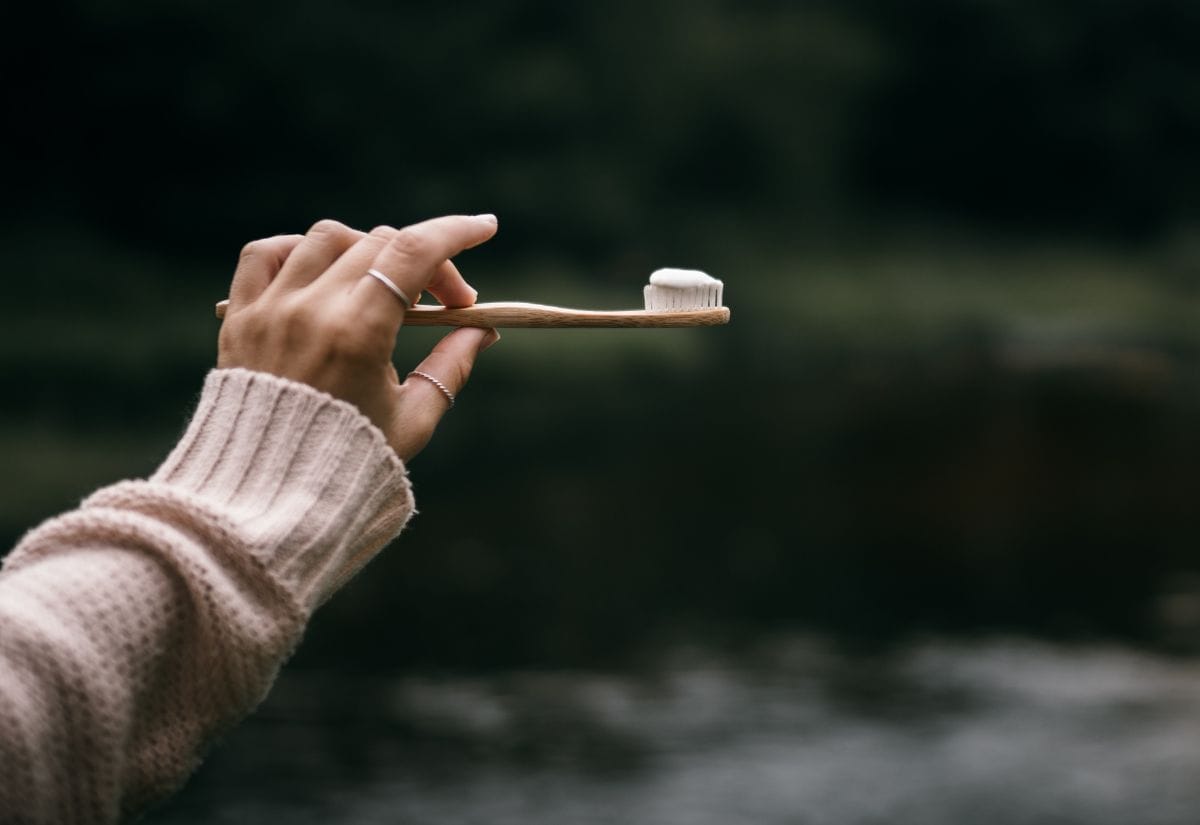
So toothpaste for dental care… not safe. Toothpaste for other uses around the house… totally okay. It’s like Coke. I don’t drink it, but it beats all at cleaning a chalkboard.
How are we going to use up that tube that you no longer want in your bathroom? We are going to find other uses for it (please only use paste for these ideas, not gel). Such as these 12 uses:
- Make Your Car Headlights Shine: I recently cleaned my car’s headlights because the days are quickly becoming shorter and they were not illuminating the road very well. To clean your headlights with toothpaste, simply use an old toothbrush to brush them in the same way you would your teeth. Tiny circles. Prevent toothpaste from dripping onto your car’s finish by wiping off excess paste before rinsing with a hose.
- Clean Crayons off Walls: When we were renters, we had finished painting and cleaning our apartment the night before our move. Wouldn’t you know that that was the first time my son ever thought drawing on the walls was a good idea? Perhaps it was the allure of the freshly painted white surface. One wall in his room was covered in red and black crayon. Since Crayola is washable, I figured I would give dish soap a go. No longer did the crayon have any texture, but the color was still there. I called Crayola, and apparently every color is washable, except black and red. Doesn’t that just figure? I told them that they should say mostly washable on the carton. In any case, my apartment inspection was in a matter of hours, and I was determined not to forfeit my security deposit. After gently scrubbing with toothpaste, the crayon stain was gone. You should use it on flat or eggshell paint finishes because it might dull higher gloss wall paints.
- Whiten Your Piano Keys: This was among my earliest experiences with using toothpaste for cleaning. On Craigslist, I found an exquisite piano, but the keys were extremely dirty and yellowed. After reasoning that ivory is similar to teeth, I purchased a low-priced tube of whitening toothpaste. I brushed each key with a child’s toothbrush, removed excess toothpaste with a clean rag, and then rinsed with a mixture of one part white vinegar and two parts water. Not only did they glisten, but the yellowing nearly vanished.
- Remove the Scale from Your Iron: Have you ever noticed how, while ironing, the iron just seems to drag a little bit? The reason for this is that the iron’s surface is becoming coated with minerals present in your water. To remove the minerals, use a rag and some toothpaste on your cool, unplugged iron. Rinse with water and dry immediately.
- Defog Mirrors and Goggles: Is fogging a problem for you? My children are constantly griping about how their ski goggles fog up, and I despise it when the bathroom mirror does the same thing after a shower. If you apply a small amount of toothpaste and buff the surface (without rinsing), the surfaces will no longer fog. To avoid a sticky surface, use only adult toothpaste for this task; children’s toothpaste contains sweeteners.
- Remove Rust and Hard Water Stains: We get hard water stains on the porcelain around our bathroom sink drain. We also occasionally get rust around the bolts of the toilet when the temperatures spike during the summer. An old toothbrush and some toothpaste get the stains to lift easily. I usually prefer vinegar for bathroom cleaning, but it just lacks the power to remove these stains.
- Get Rid of Water Rings: I didn’t care much about water rings until two things happened. First, someone (who will stay anonymous but knows who he is) put a glass of milk on top of my piano on a hot day. Second, we remodeled the kitchen with gorgeous handmade oak counter tops, and people have grown accustomed to putting things on it like they did when we had linoleum. To clean water rings, buff the area with a bit of toothpaste on a clean rag. Rinse with a damp cloth. Let the area dry completely before using furniture polish.
- Clean Scuffs from Leather: This works for all leather items, from shoes to purses, and even on furniture. Rub toothpaste on the leather with a soft cloth, and rinse with a damp cloth. I love using toothpaste to clean the grass stains from my kids’ sneakers.
- Revitalize Your Plastic Patio Furniture: My patio furniture looks gross every spring. It probably wouldn’t be so bad if I remembered to store them out of the elements every fall and winter, but I don’t. Not only do they get black staining, they also become powdery, so you end up with a white bum when you sit on them. Well, that’s just not attractive. Scrub the patio furniture with a scrubbing brush and a line of toothpaste. You can use a toothbrush to get into the nooks and crannies. Rinse well. Rubbing a little coconut oil over them after cleaning will help them stay cleaner for longer.
- Clean Your Refrigerator Seal: I live with boys, so my fridge gets really gross. People who share a household with boys will completely understand. I love them, but even right out of the shower, they manage to leave their mark all over the house. Because our refrigerator handle seems to be purely decorative and they open the fridge using the side of the door, the seal in that area gets grimy fast. Don’t even get me started about the things spilled on the top seal. How that occurs is beyond me, but it does. Whiten the seals by rubbing them with toothpaste and then rinsing them clean.
- Fill Nail Holes: Sure, you could buy putty at the store, but I already have some toothpaste in my cleaning cupboard, and toothpaste is much cheaper. Simply apply pressure to the toothpaste as you rub it over the hole with your finger; it will immediately fill the space. Don’t worry, toothpaste is paintable.
- Polish Your Silver and Chrome: There isn’t much silver in my possession. I tend to lean toward simplicity. On special occasions, we do bring out our nice silverware. When it’s in need of a little polishing, I use toothpaste to gently buff it until it sparkles like new. This will work on jewelry as well, but if it’s particularly valuable or sentimental, you should take it to a professional jeweler. You can get away with those cheap silver earrings. While you’re in the mood to polish, give your bathroom faucets a quick once over as well.
Now that you know toothpaste can clean your home thoroughly, polish your car’s headlights, and remove rust stains, you might be reluctant to put it in your mouth. I don’t blame you.
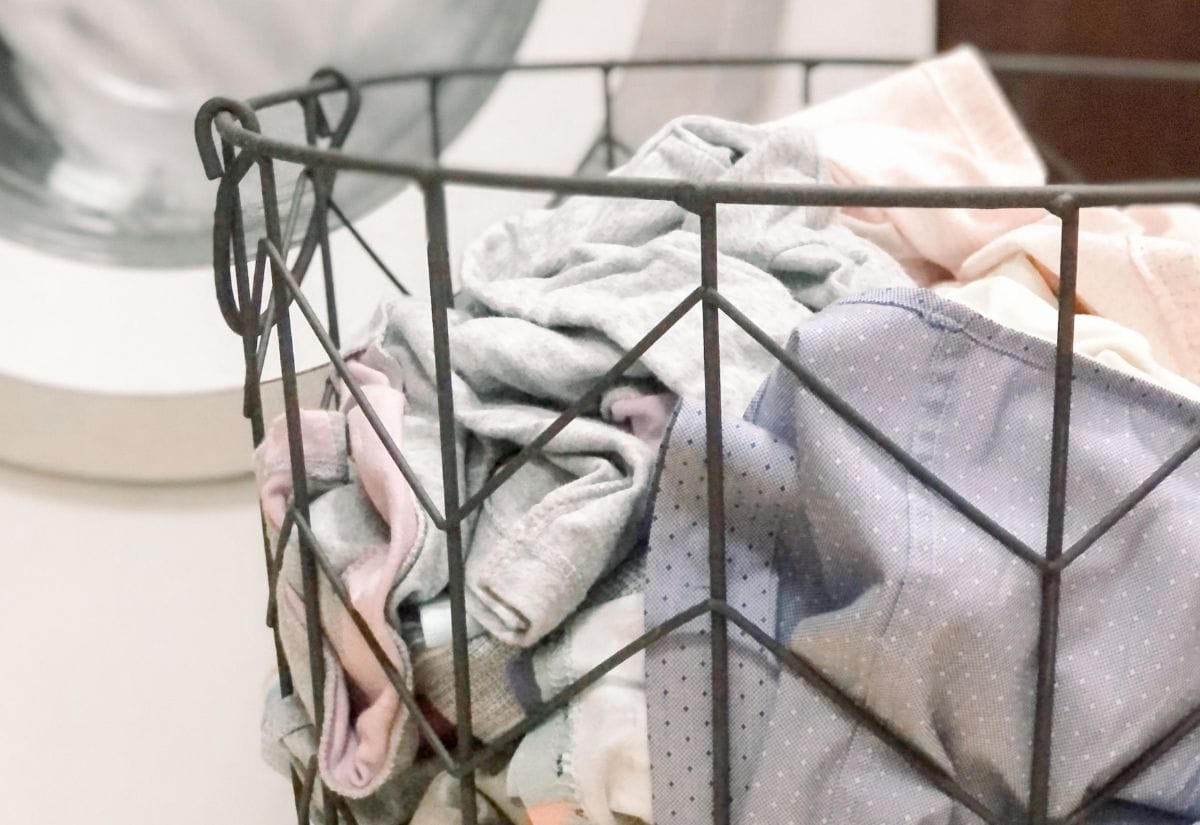
A laundry detergent is something I am in the process of developing. There are a lot of steps involved in getting it ready, and it is not compatible with cloth diapers, I am afraid. I’ll keep plugging away at it and report back when I’ve come up with an acceptable detergent that is suitable for all laundry. UPDATE: I have discovered Soap Nuts for all my cloth diaper laundry needs. I’ve also improved my laundry detergent recipe that is much easier to make.
Frequently Asked Questions
If you’ve found value in this blog post and enjoyed reading it, why not share it with your Pinterest community? Pin the image below and spread the love!
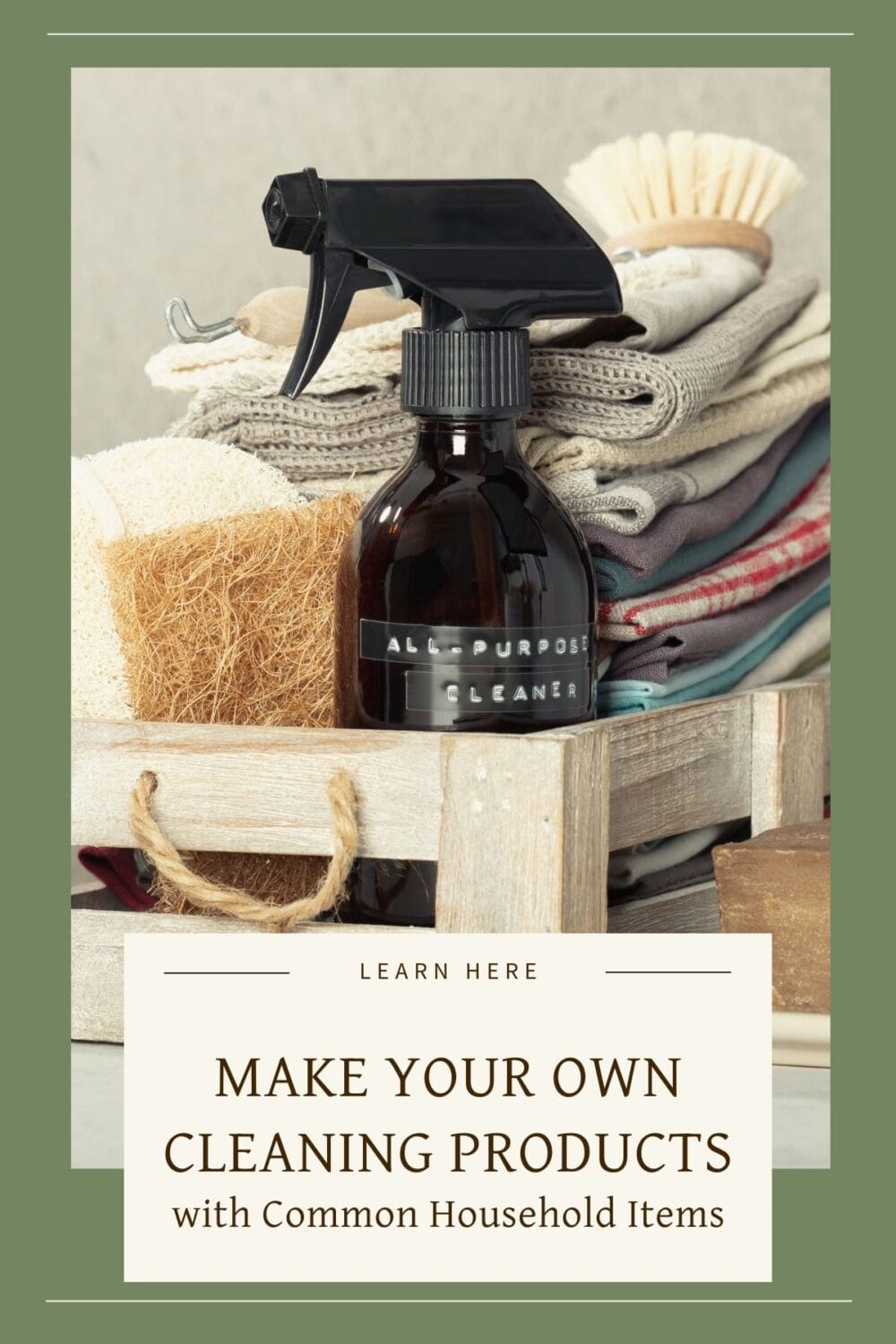
Using cleaning products made at home is a great way to save money, help the environment, and gain confidence in your own abilities. I highly recommend giving it a try. So, why not start today? Get all the necessary ingredients, whip up a batch, and become a part of the expanding group of do-it-yourselfers who have found the satisfaction and joy in creating their own household cleaners.
Do you have any cleaning recipes that you’re in love with? I’d be thrilled if you’d share them with me and the other readers in the comments below.

I use baking soda and lemon juice to clean enamel stove top. Works great on sinks too.
I have recipes to make my own cleaning products and use to do it, but haven’t in years. I think it’s time I got back to basics! 🙂 Thanks for sharing with SYC. Pinning.
hugs,
Jann
It’s really awesome how you came up with those natural cleaning methods. I will definitely try those cleaning receipts, and will share the results with you. Thanks for sharing!!
You are so welcome!
You had me with, ” I would only show them to a select few and you are lucky to be one of them.” I was hoping for that exclusivity.
You’re right these are amazing recipes. It just shows you what a crock of bull we’ve bought by listening to the ads from those companies that make cleaning products. Not only did we “buy” their bull, we invited them to bring toxic products into our homes.
I haven’t used the Soft Scrub recipe before. Could you substitute something for club soda? Or is there an ingredient in club soda that is important? We can’t get club soda here in BC very easily. The one here is syrupy and high fructose corn syrup.
Glad you enjoyed the exclusivity 🙂 You can switch out the club soda for straight water if that’s easier. The club soda really only makes a difference when the mix is fresh. The bubbles help lift off goop.
Club soda is just water with CO2 The syrupy pop-like stuff is probably tonic water, a totally different thing. Club soda is easily made at home if you have one of those Soda Stream devices. or an old fashion seltzer water containers (think of bars in black and white films). Canada Dry brand blue label (yellow is tonic).